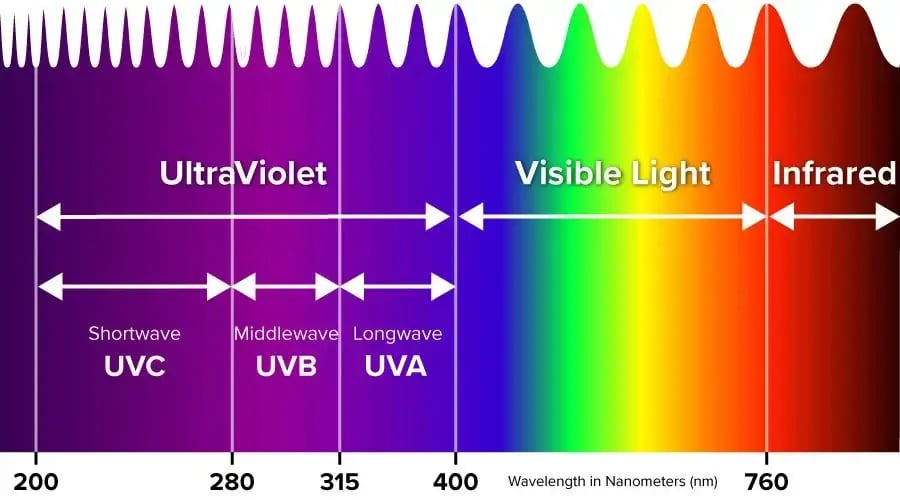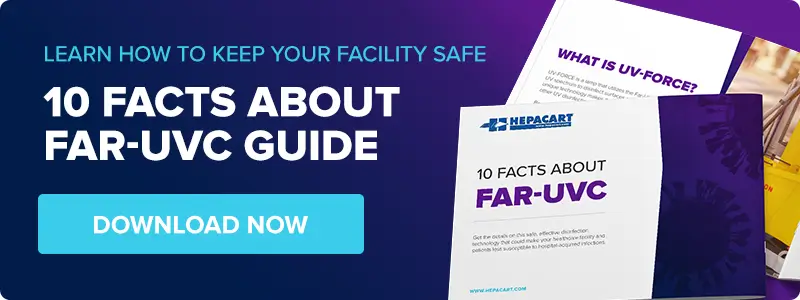
Besides learning the colors of the visible light spectrum with a catchy acronym in middle school, most of us don’t spend much time thinking about ultraviolet radiation or UV rays.
However, UV light in particular is increasingly popular as a way to disinfect surfaces, liquids, and air in a way that’s safe and fast.
In particular, the introduction of products that feature UV-FORCE® technology has made far-UV disinfection that much more attractive as an option. But what is far-UV? And how does it differ from other types of UV light? Keep reading to find out.

What is Ultraviolet Light?
You probably already have some understanding of ultraviolet light. UV rays are what we’re protecting ourselves against when we wear sunscreen and avoid sunburns. But how does UV differ from other types of light? The difference is in the wavelength.
UV light has a wavelength between 100 and 400 nanometers, shorter than that of any visible light. The term “ultraviolet” refers to the fact that this light has a shorter wavelength than violet light, which has the shortest wavelength of any color light that is visible to the naked eye.
UV Light Subtypes
Within the category of ultraviolet, there are subtypes also divided by the difference in wavelengths. Most commonly, you will see UV light divided into A, B, and C subtypes with A having the longest wavelength (320nm to 400nm) and C having the shortest (100nm to 290nm). UV-A light is also referred to as “blacklight,” UV-B light (290nm to 320nm) is what causes sunburns in humans upon exposure and UV-C light mostly absorbed by the atmosphere so we have little contact with this type of light.
Near, Middle, and Far UV
When it comes to scientific use, different categories are used to distinguish one type of UV light from another. For these purposes, UV subtypes are Near, Middle, and Far, with Near-UV matching up closest to UV-A, Middle-UV matching with UV-B and Far-UV matching with UV-C in terms of wavelength.
The difference between Near-UV and Far-UV is simply a matter of wavelength. The wavelength determines what happens when the light comes into contact with human skin as well as with dangerous pathogens.
Ultraviolet Light and Disinfection
UV light in different forms is frequently used for disinfection in healthcare facilities, for food manufacturing, and in agricultural settings. Its shorter wavelength makes Far-UV the effective choice for disinfection. A Far-UV light can cause the physical destruction of viruses, bacteria, and fungi so that they will no longer cause infection or harm. Further, Far-UV light can cause this destruction quickly, without the use of potentially harmful solvents, making it an attractive choice for infection control tools.
To learn more about how UV-FORCE® technology which utilizes Far-UVC light can be an effective disinfection tool in many scenarios, click below.
